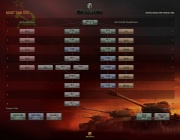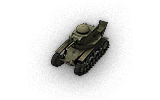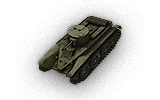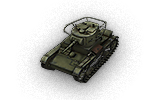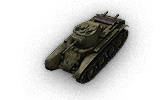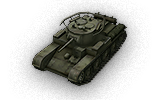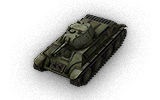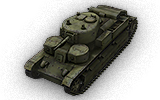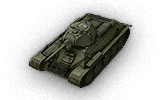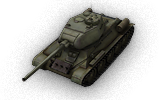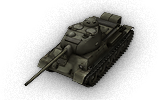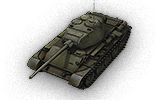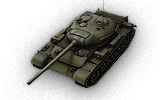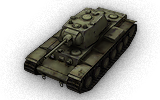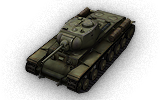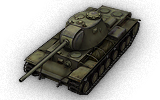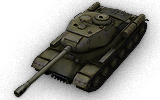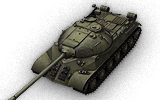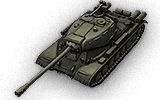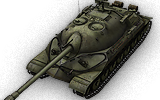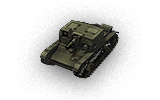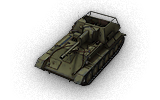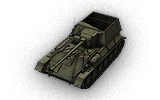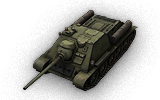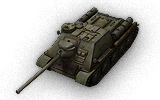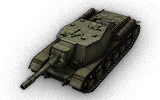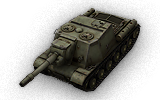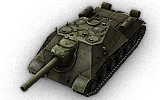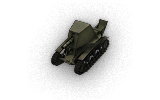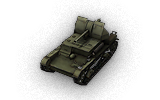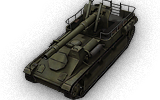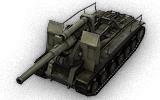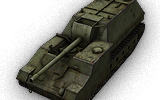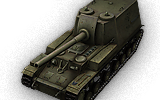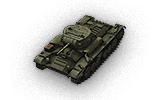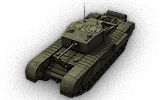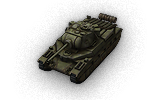Difference between revisions of "Tanks of USSR"
| Revision as of 18:20, 26 January 2011 | Revision as of 18:58, 26 January 2011 | |||
| Line 1: | Line 1: | |||
| + | {{panel title|icon=[[image:SOV flag.png|120px|left|link=|]]|content= | |||
| + | Soviet engineers focused on large caliber guns thus their tanks have the highest damage values around. Because the smaller tanks can't compete with the counterparts' armor thickness it was compensated with acute armor slope values thus greatly increasing effective armor as well as the chance of a shell ricocheting. Very cold Russian winters forced the tank developers to use diesel engines lest their fuel freezes in the gas tank. So Soviet tank engines have a much lower chance of catching on fire compared to their gasoline-powered counterparts. | |||
| + | ||||
| + | Soviet light tanks are the fastest around and like most soviet tanks have a small frontal profile and sloped armor. | |||
| + | ||||
| + | Medium tanks are the fastest and most maneuverable but to make the tanks so compact engineers had to store ammo in very vulnerable places, thus increasing the chances of ammo rack detonation. | |||
| + | ||||
| + | Soviet heavies have the best values for everything except accuracy and their frontal armor thickness and slope make them almost invulnerable from the front. | |||
| + | ||||
| + | Soviet tank destroyers make up in brute firepower where they lack in accuracy. | |||
| + | ||||
| + | Soviet artillery are renown for the amount of splash damage their shells do making them heavy but cumbersome hitters. | |||
| + | ||||
| + | [[image:Soviet Tank Tree Release.jpg|thumb|Soviet Release Tank Tree]][[image:Soviet Tank Tree Full.jpg|thumb|Soviet Full Tank Tree]] | |||
| + | }} | |||
| + | ||||
| {{panel content|title=Light Tanks | {{panel content|title=Light Tanks | |||
| |content=<span class="wideList"> | |content=<span class="wideList"> | |||
Revision as of 18:58, 26 January 2011

Soviet engineers focused on large caliber guns thus their tanks have the highest damage values around. Because the smaller tanks can't compete with the counterparts' armor thickness it was compensated with acute armor slope values thus greatly increasing effective armor as well as the chance of a shell ricocheting. Very cold Russian winters forced the tank developers to use diesel engines lest their fuel freezes in the gas tank. So Soviet tank engines have a much lower chance of catching on fire compared to their gasoline-powered counterparts.
Soviet light tanks are the fastest around and like most soviet tanks have a small frontal profile and sloped armor.
Medium tanks are the fastest and most maneuverable but to make the tanks so compact engineers had to store ammo in very vulnerable places, thus increasing the chances of ammo rack detonation.
Soviet heavies have the best values for everything except accuracy and their frontal armor thickness and slope make them almost invulnerable from the front.
Soviet tank destroyers make up in brute firepower where they lack in accuracy.
Soviet artillery are renown for the amount of splash damage their shells do making them heavy but cumbersome hitters.
| Light Tanks | MS-1 • BT-2 • Tetrarch • T-26 • T-60 • BT-7 • BT-SV • LTP • M3 Light • T-127 • T-46 • T-70 • A-20 • T-50 • T-80 • Valentine II • T-50-2 • MT-25 |
| Medium Tanks | A-32 • T-28 • Matilda IV • T-34 • T-34-85 • A-43 • KV-13 • T-43 • A-44 • T-44 • Object 416 • T-54 • Object 430 II • Object 283 • T-62A • Object 140 • Object 430 |
| Heavy Tanks | Churchill III • KV • KV-1 • KV-220 • KV-220 Beta-Test • KV-1S • KV-2 • T-150 • IS • KV-3 • IS-3 • IS-6 • KV-4 • KV-5 • IS-8 • ST-I • IS-4 • IS-7 |
| Tank Destroyers | AT-1 • SU-76 • SU-85B • SU-85 • SU-85I • SU-100 • SU-100Y • SU-100M1 • SU-122-44 • SU-152 • ISU-152 • SU-101 • Object 704 • SU-122-54 • Object 263 • Object 268 |
| Self-Propelled Guns | SU-18 • SU-26 • SU-5 • SU-122A • SU-8 • S-51 • SU-14-1 • SU-14-2 • 212A • Object 261
|
